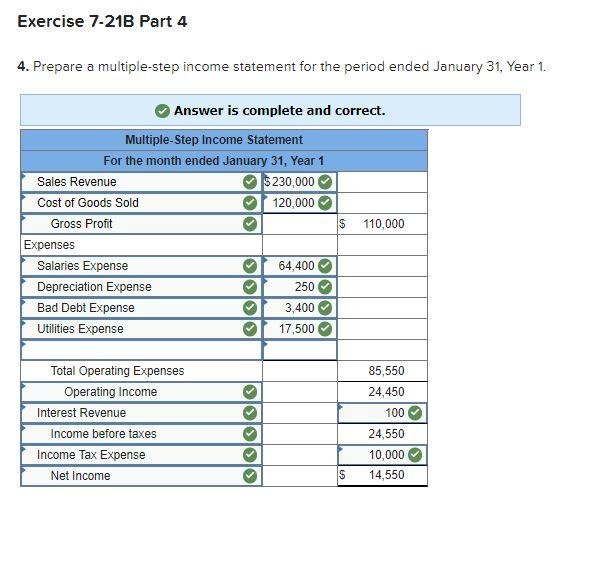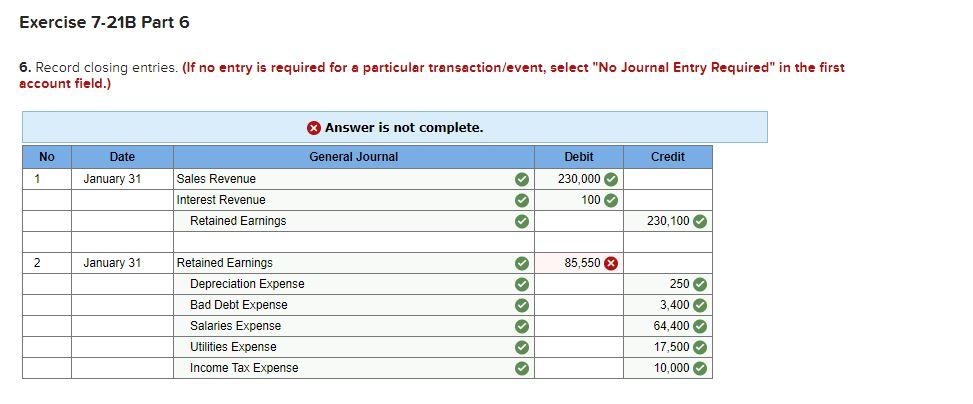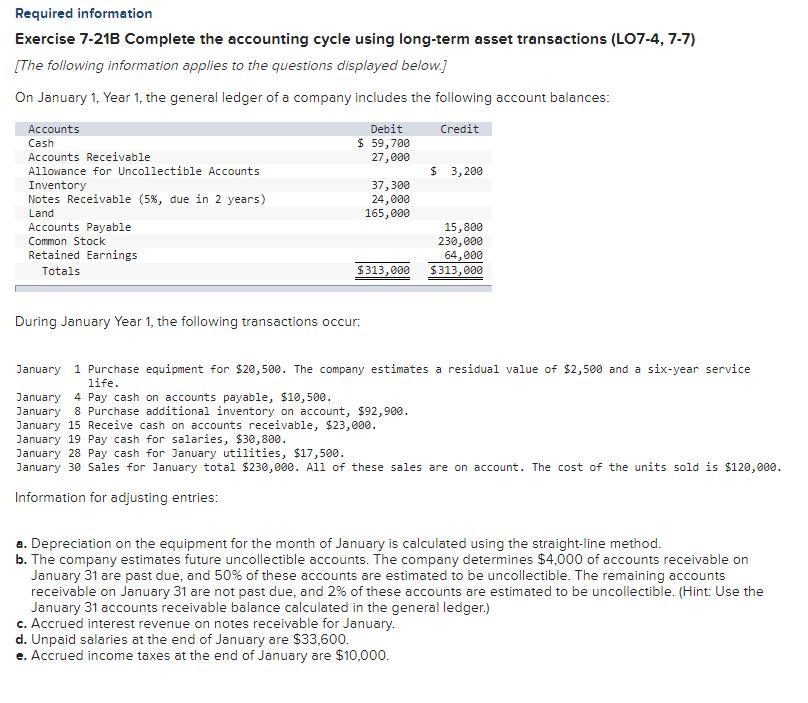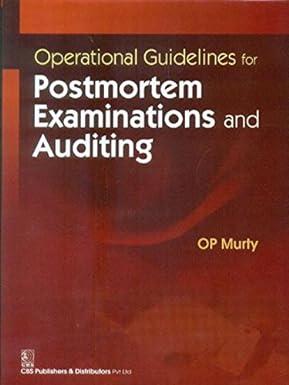Answered step by step
Verified Expert Solution
Question
1 Approved Answer
I can't figure out what the retained earnings is for Part 6 based on part 4 with the total of expenses if you add it



I can't figure out what the retained earnings is for Part 6 based on part 4 with the total of expenses if you add it comes out to $85,550 it comes out incorrect, I thought it was 78550 or 95550 also incorrect. all the parts are correct expect for part 6 retained earnings.
Exercise 7-21B Part 4 4. Prepare a multiple-step income statement for the period ended January 31, Year 1. Answer is complete and correct. Multiple-Step Income Statement For the month ended January 31, Year 1 Sales Revenue $ 230,000 Cost of Goods Sold 120,000 Gross Profit S 110,000 Expenses Salaries Expense 64,400 Depreciation Expense 250 Bad Debt Expense 3,400 Utilities Expense 17,500 30 Total Operating Expenses Operating Income Interest Revenue Income before taxes Income Tax Expense Net Income OOOO 85,550 24,450 100 24,550 10,000 14,550 S Exercise 7-21B Part 6 6. Record closing entries. (If no entry is required for a particular transaction/event, select "No Journal Entry Required" in the first account field.) Answer is not complete. No Date General Journal Debit Credit 1 January 31 Sales Revenue Interest Revenue Retained Earnings 230,000 100 230,100 2 January 31 85,550 X Retained Earnings Depreciation Expense Bad Debt Expense Salaries Expense Utilities Expense Income Tax Expense OOOOOOOOO 250 3,400 64.400 17,500 10,000 Required information Exercise 7-21B Complete the accounting cycle using long-term asset transactions (L07-4, 7-7) (The following information applies to the questions displayed below.) On January 1, Year 1, the general ledger of a company includes the following account balances: Accounts Debit Credit $ 59,700 Accounts Receivable 27,000 Allowance for Uncollectible Accounts $ 3,200 Inventory 37,300 Notes Receivable (5%, due in 2 years) 24,000 165,000 Accounts Payable 15,800 Common Stock 230,000 Retained Earnings 64,000 Totals $313,000 $313,000 Cash Land During January Year 1, the following transactions occur. January 1 Purchase equipment for $20,500. The company estimates a residual value of $2,500 and a six-year service life. January 4 Pay cash on accounts payable, $10,500. January 8 Purchase additional inventory on account, $92,900. January 15 Receive cash on accounts receivable, $23,000. January 19 Pay cash for salaries, $30,800. January 28 Pay cash for January utilities, $17,500. January 30 Sales for January total $230,000. All of these sales are on account. The cost of the units sold is $120,000. Information for adjusting entries: a. Depreciation on the equipment for the month of January is calculated using the straight-line method. b. The company estimates future uncollectible accounts. The company determines $4,000 of accounts receivable on January 31 are past due, and 50% of these accounts are estimated to be uncollectible. The remaining accounts receivable on January 31 are not past due, and 2% of these accounts are estimated to be uncollectible. (Hint: Use the January 31 accounts receivable balance calculated in the general ledger.) c. Accrued interest revenue on notes receivable for January d. Unpaid salaries at the end of January are $33,600. e. Accrued income taxes at the end of January are $10,000Step by Step Solution
There are 3 Steps involved in it
Step: 1

Get Instant Access to Expert-Tailored Solutions
See step-by-step solutions with expert insights and AI powered tools for academic success
Step: 2

Step: 3

Ace Your Homework with AI
Get the answers you need in no time with our AI-driven, step-by-step assistance
Get Started


